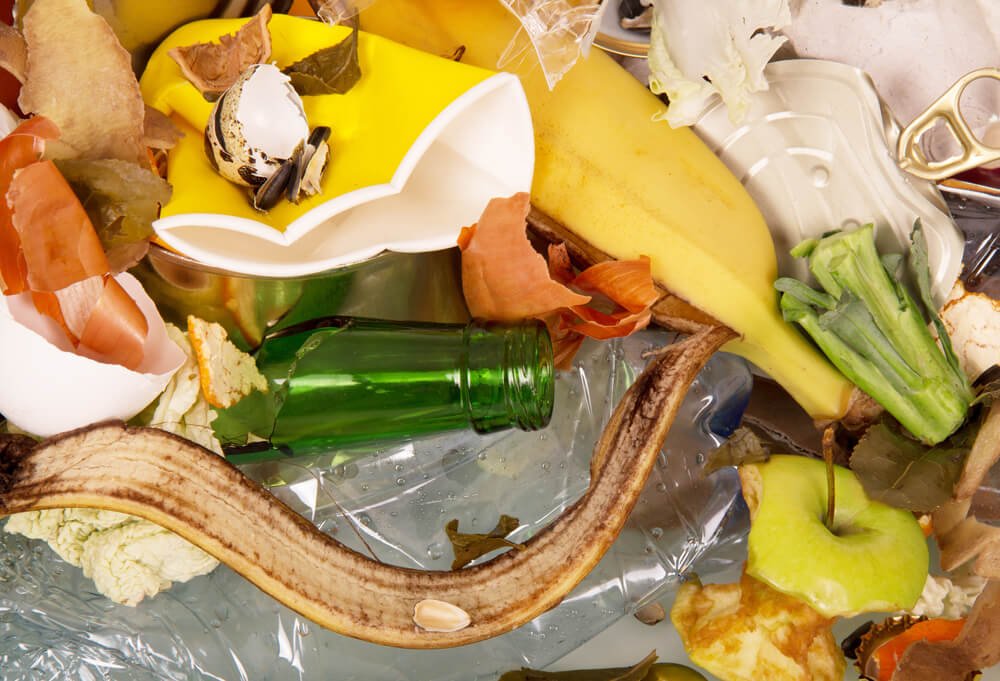There are advantages to using oxo-biodegradable plastics over polyethylene (PE) and polypropylene (PP).
For instance, oxo-biodegradable plastic is reusable.
And when it has reached the end of its life cycle, it breaks down faster than regular plastics.
Oxo-biodegradable plastics offer an alternative to traditional single-use plastic products.
And I say whatever we can do to reduce the billions of tons of plastic waste is good.
So, if you ask me – are oxo-biodegradable plastics harmful to the environment – I say no.
What are oxo-biodegradable plastics?
Oxo-biodegradable plastics are petroleum-based plastics infused with metal salts.
The additive helps speed up the breakdown of plastic into smaller pieces.
And only work in the presence of sunlight and oxygen.
The idea is the microorganisms will decompose the smaller pieces.
Some biodegradable single-use plastic products are oxo-biodegradable plastic.
The idea is to turn a single-use item into a reusable item.
Oxo-biodegradable plastic manufacturers claim their products are reusable, biodegradable, and compostable.
· Drink containers
· Disposable cups
· Disposable cutlery
· Shopping bags
· Plastic packing film
· Disposable plates
Is oxo-biodegradable plastic biodegradable?
It depends on where in the landfill the oxo-biodegradable plastic is.
Oxo-biodegradable plastic needs oxygen and UV light to degrade.
So, the oxo-biodegradable plastic needs to be on or near the surface of the landfill pile to break down.
If the oxo-biodegradable plastic becomes buried, it will be unable to break down.
This is because of the lack of UV light and oxygen.
The oxo-biodegradable plastics in the upper layers break down into smaller fragments.
It does this sooner than regular polyethylene (PE) and polypropylene (PP) plastics.
The smaller fragments take up less space and settle to the bottom of the pile.
What is Biodegradable?
Materials decomposed by organic organisms are biodegradable.
To be biodegradable, the item must break down without causing harm to the environment.
It also means limited amounts of harmful chemicals that enter the soil, air, and water.
Bacteria, fungi, and environmental conditions cause the decomposition of biodegradable materials.
Types of biodegradable materials include paper and food waste, sewage sludge, and manure.
Is Oxo-biodegradable bad?
There are several organizations that do not find benefits to oxo-biodegradable plastic.
The major downfalls are oxo-biodegradable plastic that is non-compostable.
For a material to be compostable, it must break down into soil conditioning materials.
And oxo-biodegradable plastics do not meet these criteria.
The other bad thing about oxo-biodegradable plastics is that they turn into microplastics.
The idea was the smaller pieces will break down in the environment.
The problem is they do not completely decompose.
Instead, small fragments of plastic are found in soil and food. Microplastics pollute the oceans too.
Oxo-biodegradable vs. Biodegradable
Biodegradable means it can break down by biological means.
Bacteria and fungus help break down biodegradable materials.
Oxo-biodegradable plastics break down in the presence of ultraviolet light and oxygen.
Oxo-biodegradable materials–
- Decomposes in the presence of oxygen
- Degrades in ultraviolet light (sunlight)
- Breaks down into microplastic
- Can take up to five years to decompose
Biodegradable materials –
- Decomposed by fungus
- Bacteria breaks it down
- Breaks down completely
- Can decompose within a year
Is oxo-biodegradable plastic packaging a good plastic alternative?
I say oxo-biodegradable is better than polyethylene (PE) plastic and polypropylene (PP) plastic.
Sure oxo-biodegradable plastic has its drawbacks but, in the end, I say it is the better choice.
Oxo-biodegradable plastic takes about five years to decompose.
Compare that to polyethylene and polypropylene plastic bags.
Both take over one thousand years to decompose.
Others do not share my opinion.
Opponents say it is unreasonable to claim oxo-biodegradable plastic is biodegradable.
This is because it does not decompose within a year.
With others agreeing, stating the rate of degradation is not quick enough.
And as such is not considered biodegradable.
Why ban oxo-biodegradable?
Many European Union Member States are moving to ban oxo-biodegradable plastic.
One of their issues with oxo-biodegradable plastic is it breaks down into microplastics.
These microplastics find their way into waterways and the soil.
Researchers are beginning to find microplastics in our soils, foods, water, and fish.
Another concern of theirs is that oxo-biodegradable plastics are not recycled with other plastics.
Oxo-biodegradable plastic is not identifiable from other plastics.
This makes it difficult for consumers. It is possible for people to place them in the recycling bin by mistake.
This causes problems for the recycling industry.
Can I recycle oxo-biodegradable plastics?
Manufacturers of oxo-biodegradable plastic claim their products are recyclable.
Yet, opponents of oxo-biodegradable plastic disagree.
They quote studies that show oxo-biodegradable plastics are not recyclable.
In most areas, oxo-biodegradable plastic is not recyclable.
This is because they need extra stabilizers to process them in industrial recycling.
This causes problems with the existing recycling system, making oxo-biodegradable considered non-recyclable.
That is why opponents say it is unreasonable to claim it is recyclable.



